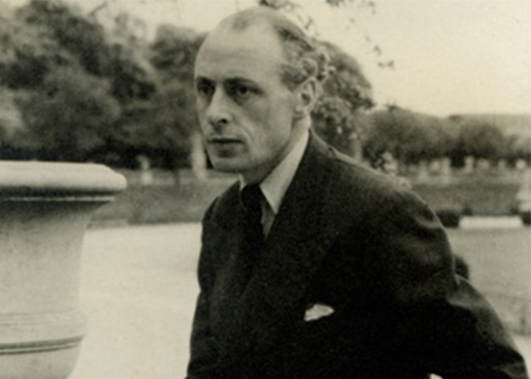Her childhood memories of the garden in Bellaggio on Lake Como, paired with an irrepressible love for all things botanical and her friendship with the great “gardener” Russel Page, allowed Lavinia Taverna to transform a plain piece of land into a magical garden blending Mediterranean tradition and a taste for English landscape gardening.
In 1967 Lavinia Taverna engaged Russell Page to redefine and polish the layout of the garden she had created a few years before. The space was thus structured in geometrical “theme rooms” and integrated with an area with a more naturalistic setting. Among its over thirty “areas” named “gardens” home to important plant species, specimen and particular scenic effects, there are the “Cortile del Carrubo” (carob tree courtyard), the “Giardino rosso” (red garden), “Giardino grigio” (grey garden), “Viale degli Ellebori” (hellebore pathway) , “angolo delle Magnolie” (the magnolia corner), “Giardino degli ulivi” (olive tree garden), the “Prato blu” (blue lawn), the “Vasca spagnola” (Spanish basin), the “Viale bianco” (white pathway). Giardini della Landriana is also home to a wide variety of roses, from the Tea to the Chinensis, as well as antique roses and the pure white Iceberg roses Page was so fond of. Also on the premises is a fabulous citrus garden with a regular layout of trees and boxwood hedges. Page’s highly structured design over the years saw the introduction of alterations according to the owner’s tastes: new areas were created, enriching the harmony and the charm of this endlessly flowering garden. Lavinia Taverna not only has left us her garden, but also the history of its making in a captivating book where we can immerse ourselves in this adventure, with its highs and lows, always faced with indomitable passion. For many years, in spring and autumn, Giardini della Landriana have hosted an important floricultural exhibition.
Find out more
GARDENS OF THE TWENTIETH CENTURY
Author of countless gardens in various parts of the world, from his native Great Britain to France, Spain, Italy, Switzerland, Persia, Egypt, the United States, Mexico and Chile.
Very sensitive to the historical approach to the garden, Russell Page was an innovator along the lines that William Morris took to Gertrud Jekyll and Edwin Lutyens.

 Landriana Gardens
Contacts
Landriana Gardens
Contacts
Contacts
Telephone:+39 06 91014140
Other contacts::To book the visit: +39 333 2266855 / +39 06 91014140
Address
Via Campo di Carne, 51
00040 , Tor San Lorenzo (RM)
 Landriana Gardens
Opening times and prices
Landriana Gardens
Opening times and prices
Opening hours
Group and school visits (also with the possibility of lunch) can be arranged every day of the week upon request by email to: [email protected] or by phone at +39 333 2266855 / +39 06 91014140.
Tours can also be arranged in English, French, German and Spanish.
Pricing
- Adults: € 8,00
- Children (from 11 to 14 years): € 4,00
- Family” ticket, 2 adults and 2 children (11/14 years old): € 20,00
- Free admission: children up to 10 years old
Groups rates
- Groups up to 50 people: € 8,00 adults
- Groups over 50 people and senior centers: € 6,00 adults
- Reimbursement of guide expenses: € 50,00
 Landriana Gardens
How to get there
Landriana Gardens
How to get there
Address
Via Campo di Carne, 51
00040 , Tor San Lorenzo (RM)
Latitude: 41.5584113
Longitude: 12.5646178
How to arrive by road
The Landriana Gardens are located south of Rome, in Tor San Lorenzo – Ardea.
- Pontina S.S. 148 Exit via Riserva Nuova (shopping mall Aprilia 2)
- take via Riserva Nuova to the end
- at the crossroads turn right into via della Cogna and go straight on for via Campo di Carne at no. 51 on the right (after the nurseries) you have arrived at the “Giardini della Landriana”.
How to arrive by train
Train from Roma Termini station (direction Nettuno) stop Campo di Carne (about 40 minutes) source www.trenitalia.com
- Train departures from Roma Termini to Campo di Carne: about every hour
- Upon arrival, take the shuttle from the FS Campo di Carne station towards Tor San Lorenzo and ask to stop in front of the Landriana Gardens.
RETURN
- To return, you must wait for the shuttle on Via Campo di Carne, in front of the entrance to the gardens.
- Trains departing from Campo di Carne to Roma Termini: about every hour
Please note: On Sundays the shuttle service does not operate and trains are less frequent.
 Landriana Gardens
Services/Accessibility
Landriana Gardens
Services/Accessibility
Services
free
 Landriana Gardens
Private events
Landriana Gardens
Private events
 Landriana Gardens
Itineraries
Landriana Gardens
Itineraries
You could find the garden in these itineraries
 Favorite saving result
Favorite saving result
 Warning!
Warning!
You've have to sign up or sign in to add this element to your favorites.
